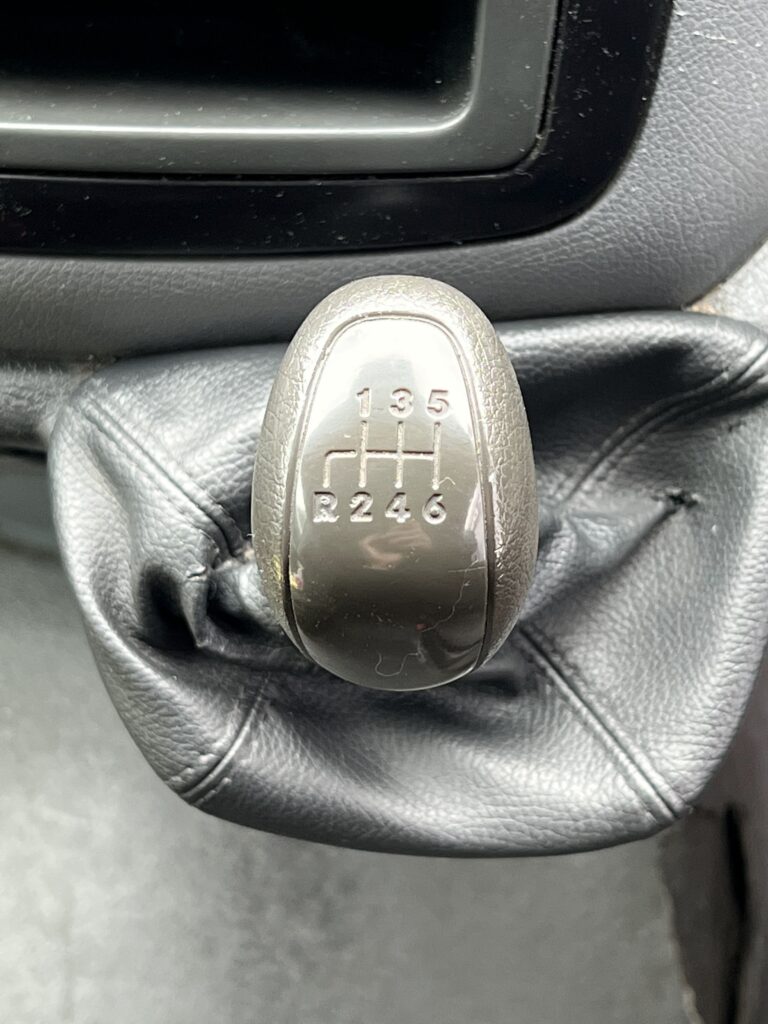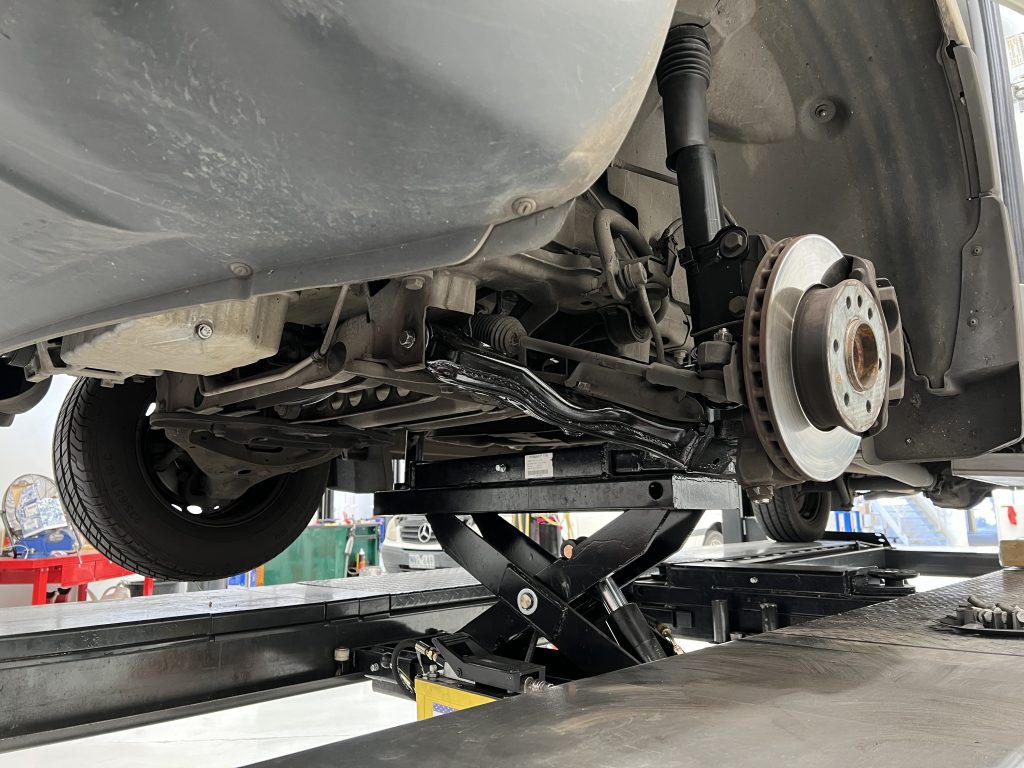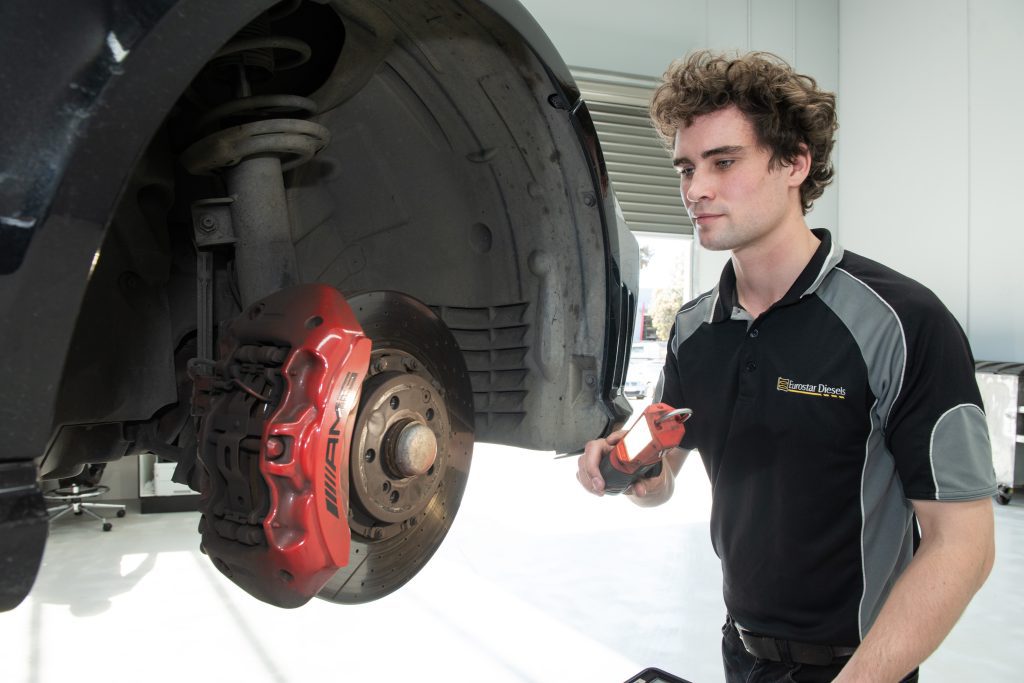Common Problems for Sprinter and Vito Vans
Should I be worried about Common Problems on Sprinter and Vito Vans?
The short answer is no, you should not be worried. Mercedes Sprinter and Vito vans are the best built and longest lasting vans you can buy.
All you need is the eyes of an expert to spot any issues before they can become serious.
Automatic Transmission Problems
Automatic transmissions in diesel Mercedes vehicles can experience various issues such as slipping gears, delayed shifts, or transmission fluid leaks. These problems can arise due to wear and tear, fluid contamination, or electronic control unit (ECU) malfunctions. The transmission system is critical for smooth gear changes and optimal vehicle performance.
The automatic transmissions in Vito and Sprinter vans are meant to be very smooth. It’s easy to keep your transmission in good condition, the only maintenance requirement is Transmission Services at a maximum interval of 120,000km. Unfortunately many Sprinter and Vito vans come to us that have been neglected. Maybe the previous owner or mechanic didn’t know, or didn’t want to do the services.
Signs of an Issue
- Slipping gears: The transmission unexpectedly changes gears or slips out of gear, causing the engine to rev without a corresponding increase in speed.
- Delayed shifts: Noticeable delay when the transmission shifts between gears, leading to rough or jerky transitions.
- Fluid leaks: Visible transmission fluid leaks under the vehicle, often a reddish-brown colour.
- Warning lights: Transmission-related warning lights on the dashboard, such as the check engine light or a specific transmission warning indicator.
Troubleshooting
Diagnosis: An expert at Eurostar Diesels can check transmission fluid levels and inspect for leaks. We use diagnostic tools to read transmission error codes and we assess the condition of the fluid and internal components.
Fluid change: Replace old or contaminated transmission fluid. At Eurostar Diesel we ensure the correct type of fluid is used as specified by the manufacturer.
Repair: Fix any leaks by replacing seals or gaskets, replace worn or damaged components, or rebuild the transmission if necessary.
Electronic issues: If the problem is related to the transmission control module, it may need reprogramming or replacement.
Maintenance Tip: The automatic transmissions in Vito and Sprinter vans are meant to be very smooth. At Eurostar Diesels it is easy to keep your transmission in good condition, the only maintenance requirement is our Transmission Services at a maximum interval of 120,000km.
Pictured Right: Automatic transmission with sump pan removed
Prevention is the best cure, if you don’t know when the last service was done, book in for one of our Transmission Services or if you are facing a more serious transmission symptoms then the Transmission Repair and Reconditioning may be required.
Read more about Automatic Transmissions here.

Coolant Warning Light
Mercedes Sprinter and Vito vans feature several dashboard warning lights, one being the coolant warning light. This warning light indicates a problem with the engine’s cooling system, which is responsible for maintaining optimal engine temperature. Proper cooling is essential to prevent engine overheating and subsequent damage. This light can be triggered by various issues, including low coolant levels, a leak in the cooling system, a faulty coolant temperature sensor, or a failing water pump.
It is important to note that occasionally, this warning light may be illuminated despite the reservoir tank being full, especially in w906 Sprinters (2006-2018). This issue typically arises from a faulty plastic float inside the coolant tank, which sinks and gives a false low reading. The solution involves replacing the round plastic coolant tank with an internal float mechanism. Although seemingly minor, addressing this issue promptly is crucial.
Signs of an Issue
- Coolant warning light: Illuminated on the dashboard.
- Engine overheating: The temperature gauge may show higher-than-normal readings, and you may notice steam coming from under the hood.
- Coolant leaks: Puddles or drops of coolant under the vehicle, often bright green, yellow, or pink.
- Sweet smell: Distinct sweet odour inside or around the vehicle could indicate a coolant leak.
Troubleshooting
Diagnosis: Check coolant levels in the reservoir and inspect for visible leaks or damaged hoses. A mechanic can perform a pressure test to find hidden leaks and check the coolant temperature sensor.
Top-up: If coolant levels are low, top up with the correct type of coolant specified in the owner’s manual.
Repair: Fix any leaks, replace faulty hoses, repair the radiator if it’s damaged, or replace the coolant sensor if it is malfunctioning.
Maintenance Tip: Regularly check coolant levels and inspect the cooling system for leaks or damage. Use the recommended coolant type for your vehicle and replace it according to the manufacturer’s maintenance schedule.
Pictured Right: Coolant check level light on a Mercedes dashboard
Ignoring the warning light could mask genuine coolant leaks. A broken coolant hose, for instance, could lead to sudden overheating and severe engine damage. If your coolant warning light is on, contact us for a quick repair that typically takes just one hour.

Diesel Particulate Filter (DPF)
The Diesel Particulate Filter are a great invention whereby they capture soot from the diesel engine exhaust to reduce emissions, but it can become clogged over time if the vehicle does not undergo regular DPF cleaning or regeneration cycles. Regeneration is the process where accumulated soot is burned off at high temperatures. The Mercedes DPF is well-designed, but issues can arise where the regeneration process is inhibited, this can occur anytime there is an engine defect, limp mode or fault/error codes in the ECU, resulting in a blocked DPF.
Signs of an Issue
- Reduced engine performance: The vehicle may feel sluggish and unresponsive.
- Increased fuel consumption: The engine has to work harder, leading to higher fuel usage.
- Warning light on the dashboard: The DPF warning light indicates the filter is becoming blocked.
- Frequent regeneration cycles: The vehicle may attempt to regenerate the DPF more often.
Troubleshooting:
Regeneration: Drive at higher speeds (e.g., on a freeway) for 20-30 minutes to facilitate automatic DPF regeneration.
Cleaning: At Eurostar Diesels we can perform a forced regeneration or clean the DPF using specialised equipment. Various methods are available for cleaning DPF filters effectively.
Diagnosis: It’s crucial to diagnose and rectify the cause of the blockage, such as addressing underlying engine issues or resolving faults triggering limp mode.
Replacement: In severe cases where cleaning is ineffective, the DPF may need to be replaced with a new unit.
Maintenance Tip: Regularly drive on the freeway to facilitate automatic regeneration and avoid short, stop-and-go trips that prevent the DPF from reaching the necessary temperature for regeneration.
Fuel Injector Leaks
Fuel injectors deliver diesel fuel into the combustion chamber in a fine mist, allowing for proper combustion. Over time, they can become clogged with carbon deposits or fail mechanically. Additionally, fuel injector leaks, also known as ‘Black Death,’ are common, especially on pre-2006 Vito and Sprinter vans. These leaks are usually caused by erosion of the copper washers that seal the fuel injectors to the cylinder head, resulting in a buildup of carbon externally around the fuel injectors.
Signs of an Issue
- Misfiring: The engine may run unevenly or stutter, especially during acceleration.
- Rough idling: The engine may vibrate or shake when idling.
- Decreased fuel efficiency: Poor combustion leads to higher fuel consumption.
- Black smoke from the exhaust: Incomplete combustion can cause excessive soot.
- Check engine light: Faulty injectors can trigger diagnostic trouble codes.
- External carbon buildup: Visible carbon deposits around the injectors, indicating possible 'Black Death.'
Troubleshooting:
Diagnosis: A mechanic can use diagnostic tools to check the injectors’ spray patterns and functionality. Inspect for external carbon buildup indicative of ‘Black Death.’
Cleaning: The injectors can be extracted and ultrasonically cleaned by a professional at Eurostar Diesels. Once cleaned we repair fuel injectors by using a special tool to machine a new sealing surface on the cylinder head. The cleaned injectors are reinstalled with new seals and bolts.
Replacement: If cleaning is ineffective faulty injectors need to be replaced with new fuel injectors, seals and bolts.
Maintenance Tip: Use high-quality diesel fuel and additives to keep injectors clean. Regular maintenance and using fuel system cleaners can prevent build-up.
Pictured Left:
Fuel Injector Leak aka 'Black Death'
Pictured Right: Clean fuel injectors
Read more about Injector Leaks Here.

Glow Plug Faults
Glow plugs are crucial for starting a diesel engine, especially in cold weather. They preheat the combustion chambers and the air and fuel mixture briefly before and after starting the vehicle, ensuring the diesel fuel ignites properly. Diesel engines rely on high temperatures to ignite the fuel, and glow plugs provide this initial heat. Glow plugs can wear out overtime due to the repeated heating cycles, another cause for glow plug failure is due to electrical issues with the control unit which can prevent the glow plugs from receiving proper power.
Signs of an Issue
- Difficulty starting the engine: Particularly noticeable in cold conditions where the engine may struggle to turn over.
- Rough idling: The engine may run unevenly or vibrate more than usual right after starting.
- Check engine light: The vehicle’s diagnostic system may detect an issue with one or more glow plugs and illuminate the engine light on the dashboard. Please note that it is normal for the glow plug light to show on the dashboard before starting the vehicle, if it shows after starting, that is indicative of a fault.
Troubleshooting:
Diagnosis: At Eurostar we use a device to test each glow plug’s resistance. If the resistance is outside the specified range, the glow plug is faulty. We also check the control unit that powers the glow plugs, as issues here can also cause failure.
Replacement: All faulty glow plugs or control units should be replaced. Our technicians can pinpoint exactly which glow plugs or components are faulty, ensuring you only replace what is necessary.
Maintenance Tip: Regular engine checks can pre-emptively catch glow plug issues, especially before the winter season when they are most crucial for starting the engine in cold conditions.
Limp Mode & Engine Light
Limp mode is a protective feature designed to minimise damage to the engine or transmission when an issue is detected. When the engine control unit (ECU) senses a problem, it limits the vehicle’s performance, often allowing only minimal power to prevent further damage. The engine light, or check engine light, accompanies limp mode to alert the driver of an underlying issue. This low power safety mode is a common problem frequently seen in Mercedes Vito and Sprinter vans, triggered by one of hundreds of potential mechanical or electrical faults in the engine and transmission.
Signs of an Issue
- Reduced power: The vehicle may feel sluggish and unresponsive, with limited acceleration and speed.
- Engine light: Illuminated on the dashboard, indicating a problem detected by the ECU.
- Limited RPM: The engine may not rev beyond a certain limit, typically around 2,500-3,000 RPM.
- Transmission stuck in one gear: The vehicle may stay in a lower gear to limit speed and reduce stress on the engine and transmission.
Troubleshooting:
Diagnosis: Use a diagnostic tool to read error codes from the ECU. These codes will point to the specific issue causing limp mode, such as sensor failures, transmission problems, or turbocharger issues. At Eurostar Diesels we have the experience and advanced diagnostic tools to assess the problem causing limp mode in your Mercedes Vito and Sprinter vans.
Repair: At Eurostar Diesels we use our extensive experience and specialised tools to address the underlying problem based on the diagnostic codes. This could involve replacing faulty sensors, repairing the transmission, fixing turbocharger issues, or addressing fuel system problems.
Reset: Once the issue is fixed, the ECU is reset to clear limp mode and restore normal operation.
Maintenance Tip: Regular servicing and promptly addressing any warning lights can help prevent limp mode from activating. Ensure all sensors and engine components are functioning correctly through routine checks.
Pictured Right: A diagnostic scan on a Mercedes Vito
We’re experts at diagnosing and repairing limp mode in Mercedes Vito and Sprinter vans as we have seen just about every Limp Mode problem before. Read more about Limp Mode here.

Manual Gear Selector Wear
The manual transmissions or gearboxes in Sprinter and Vito vans are controlled by a gear selector lever (gearstick) connected to 2 gear shift cables which are then connected to the gearbox. The manual gear selector undergoes constant, repeated use during shifting, which causes wear and potential damage to components over time. Component wear is commonly seen in the knuckle joint but can also occur in the bushings and linkage in the gear selector system. These ultimately affect the vehicles usual smooth gear changes, resulting in difficulties in changing gears or a loose gear stick. The gear selector mechanism consists of many joints, levers and various components, meaning there are plenty of places which can wear out and affect shifting performance.
Signs of an Issue
- Difficulty shifting gears: Gears may feel stiff or grind during changes, indicating wear or damage in the selector mechanism.
- Loose gear stick: The gear lever may feel loose or not engage properly, making it hard to select the correct gear.
- Noisy shifts: Unusual noises such as grinding or clicking when changing gears, indicating worn or damaged components.

Troubleshooting:
Diagnosis: Inspect the gear selector mechanism and linkage for wear or damage. Check the shifter cable, bushings, and other components for signs of wear.
Replacement: Replace worn gear selector components or linkage to restore proper shifting performance. Ensure high-quality replacement parts are used for durability.
Adjustment: Fine-tune the gear linkage to ensure proper engagement and smooth shifting. This may involve adjusting cable tension or realigning components.
Maintenance Tip: Regularly check the gear selector mechanism and lubricate moving parts as needed. Avoid aggressive gear changes to reduce wear and prolong the life of the gear selector components.
Preventive Maintenance: If your manual has become difficult to change gears, addressing the issue promptly can prevent further wear and damage, as after some time without resolve it can cause damage to the gearbox itself.
If your manual Sprinter or Vito has become difficult to change gears, then you should get it repaired ASAP. Worn gear selectors and cables will cause damage to the gearbox itself after some time. You can read more about Transmissions and Gearboxes here.
Oil Cooler Leaks
Engine oil is important as it lubricates the engine and ensure that the vehicle performs optimally. The problem that occurs is that when the oil is heated it starts to thin out and is not able to lubricate the engine efficiently. This is why Mercedes Vito and Sprinter van engines are fitted with an oil cooler, which houses the flow of both oil and coolant. The oil cooler plays a crucial role in maintaining optimal engine oil temperature by dissipating heat through a radiator-like heat exchanger. Cleverly addressing the problem of maintaining the right oil temperature and viscosity. Over time (after approximately 170,00km milage) problems can arise with the oil cooler and leaks can occur, causing issues that compromise the oil coolers effectiveness at maintaining optimal oil temperature, leading to increased engine temperatures.
Causes of failure: There are two kinds of leaks possible here.
- Seal degradation: The seals between the oil cooler and engine can degrade over time, leading to oil leaks.
- Internal corrosion: Internally, the oil cooler can corrode, especially in older vehicles or those with neglected coolant maintenance. This corrosion causes coolant and oil to mix, affecting both lubrication and cooling properties.
Signs of an Issue
- Overheating engine: As the oil cooler loses efficiency, engine temperatures may rise beyond normal operating ranges, triggering the temperature gauge or warning lights.
- Oil leaks: Visible oil leaks or pooling around the oil cooler assembly, nearby engine components or the ground where vehicle is parked.
- Drop in oil pressure: Reduced oil pressure can lead to engine damage if not addressed promptly.
- Regular oil top ups: Frequently needing to top up the oil is another sign of a possible leak.
Troubleshooting:
Diagnosis: Specialist at Eurostar Diesels will perform a thorough inspection to identify the source of the issue. This includes checking for oil leaks, assessing coolant-oil mixing, and ensuring proper coolant flow through the cooler.
Replacement: If the oil cooler is found to be faulty due to seal degradation or internal corrosion, replacement is necessary. This process is complex and labour-intensive, particularly on the OM651 and OM642 engines found in Mercedes Vito and Sprinter vans. The experts at Eurostar Diesels have refined the process to such a degree of proficiency that we can execute it with exceptional ease and precision.
Maintenance Tip: Regularly monitor coolant levels and quality, as well as perform timely oil changes according to manufacturer recommendations. Address any oil leaks promptly to prevent further damage to engine components and maintain reliable vehicle performance.
Soft Brake Pedal
Well functioning brakes should feel powerful and smooth. The braking system relies on hydraulic pressure to function properly, and any compromise in this system can lead to a soft or spongy brake pedal that travels too far before engaging. Compared to other makes and models, Sprinter and Vito vans have a soft feeling brake pedal by design. It’s hard to describe or measure the correct travel of the brake pedal, however Eurostar Diesels technicians have driven thousands of Mercedes vans and can quickly tell if your braking system feels normal or not.
Potential Causes
- Air in the brake lines: Air bubbles can enter the brake system, reducing hydraulic pressure and causing the brake pedal to feel soft.
- Worn brake components: Over time, brake pads and rotors wear down, reducing the effectiveness of braking and contributing to a soft pedal feel.
- Brake master cylinder issues: Problems with the master cylinder can lead to inconsistent brake pressure and pedal feel.
Signs of an Issue
- Spongy brake pedal: The pedal feels soft and may need to be pressed further to engage the brakes, indicating air in the brake lines or low brake fluid.
- Increased stopping distance: The vehicle takes longer to stop, posing a safety risk.
- Brake warning light: Illuminated on the dashboard, indicating a problem with the brake system.
Troubleshooting:
Diagnosis: Identifying the specific cause of a soft brake pedal involves a comprehensive inspection of the braking system. Our technicians specialise in diagnosing and repairing brake system issues in Mercedes vehicles. We perform various tests to identify issues in the hydraulic system, master cylinder, brake discs and pads, or, most commonly, the brake callipers.
Brake bleeding: Involves remove air from the brake lines by bleeding the brakes. This involves opening bleed valves and allowing fluid and air to escape.
Component replacement: Replace worn brake pads, rotors, or the master cylinder if necessary. Ensure high-quality OEM part replacements are used for optimal braking performance.
Hydraulic system inspection: Inspect the hydraulic system for leaks or damage that may contribute to a soft brake pedal.
Check brake fluid level: Inspect the brake fluid reservoir to ensure the fluid is at the proper level. Low fluid levels can indicate leaks or worn brake pads.
Maintenance Tip: Regularly check brake fluid levels and inspect the braking system during routine maintenance. Replace brake components at recommended intervals to ensure safe and effective braking.
Suspension Clunks
The suspension system is critical for vehicle stability, handling, and comfort. One of the best features of Mercedes Vito and Sprinter vans are that they drive and handle like smaller vehicles, due to their exceptional suspension and steering design. Over the long life of your Mercedes Van, you may begin to notice clunks, noises, or issues with steering performance, this is due to components wearing out or getting damaged.
Potential Causes
- Worn-out components: Bushings, ball joints, and shock absorbers can deteriorate over the vehicle's lifespan, especially in vehicles with a high-mileage.
- Misalignment: Improper wheel alignment can contribute to uneven tyre wear and handling issues, exacerbating suspension problems.
Signs of an Issue
- Clunking noises: Audible clunks or knocks when driving over bumps or uneven surfaces, indicating loose or worn suspension parts.
- Poor handling: The vehicle may feel unstable or have excessive body roll, especially during cornering or braking
- Uneven tyre wear: Signs of suspension misalignment, leading to irregular tyre wear patterns
- Vibrations: Felt through the steering wheel or the vehicle’s body, often indicating issues with shock absorbers or suspension alignment.
Troubleshooting:
Diagnosis: Eurostar Diesels technicians are experts at inspecting the suspension components for wear and damage, including bushings, ball joints, control arms, and shock absorbers. Diagnostic tools and visual inspection help identify the source of clunkiness and poor handling.
Replacement: Replace worn-out bushings, ball joints, shock absorbers, or other affected parts with high-quality OEM part replacements to restore proper suspension performance.
Alignment: Perform a wheel alignment to ensure proper handling and tyre wear. Misaligned wheels can lead to uneven tyre wear and poor handling characteristics.
Preventive Maintenance: Depending on a variety factors, from approximately 170,000km in a Sprinter and around 200,000km in a Vito, suspension problems start to arise. Therefore, if your vehicle has reached this mileage, we suggest routine suspension maintenance from then on. Always address any unusual noises or handling issues promptly to prevent further damage and ensure safety.
Maintenance Tip: Maintain proper tyre pressure and ensure tyres are balanced and aligned according to manufacturer specifications. Proper care of the suspension system enhances driving comfort and prolongs the life of suspension components.
Pictured Right: Suspension system, brake disc (rotor), and part of the wheel assembly
Read more about suspension here.

Turbo Boost Pressure Leaks
The Mercedes Diesel engines in Sprinter and Vito vans produce tremendous power from a small engine capacity thanks to modern turbocharger systems. The turbocharger increases engine power by forcing more air into the combustion chamber. Turbo boost pressure leaks occur when there is a loss of pressure in the turbocharging system, affecting engine performance and efficiency. Leaks can occur in the intercooler, intercooler hoses, intake elbow, throttle body and intake manifold; they are possibly the leading cause of Limp Mode.
Signs of an Issue
- Loss of power: Noticeable drop in engine performance and acceleration due to insufficient air supply to the combustion chamber.
- Hissing noise: Unusual hissing or whistling sounds during acceleration, indicating escaping air from the turbo system.
- Increased fuel consumption: The engine may burn more fuel to compensate for lost boost pressure, leading to decreased fuel efficiency.
- Check engine light: Turbo-related issues can trigger diagnostic trouble codes, illuminating the check engine light.
Troubleshooting:
Diagnosis: At Eurostar Diesels we have developed our own testing equipment for finding boost pressure leaks. We inject high pressure air and smoke into the system to pinpoint the location of leaks and cracks easily.
Repair and Replacement: Once leaks are found, replacing the damaged or worn components in the turbo hoses, intercooler or connections will restore optimal boost pressure and power to your engine. Ensure all clamps and fittings are properly tightened.
Maintenance Tip: Regularly inspect turbo hoses and connections for signs of wear or damage. Ensure proper installation and tightness of all clamps and fittings to prevent leaks. Use high-quality parts to ensure the longevity of the turbo system.
Pictured Right: intercooler - cools the air compressed by the turbocharger before it enters the engine's combustion chamber.

Vibrations
In optimal condition, Mercedes Sprinter and Vito vans operate smoothly without any vibration at any speed. Vibrations can originate from various sources, including imbalanced wheels, worn suspension components, or engine issues. These vibrations can affect driving comfort and indicate underlying problems that need to be addressed to prevent further damage.
Potential Causes
- Imbalanced wheels: Wheels that are out of balance can cause vibrations, especially at higher speeds.
- Worn suspension components: Worn-out bushings, ball joints, or shock absorbers can lead to vibrations throughout the vehicle.
- Engine issues: Engine misfires, worn engine mounts, or transmission problems can cause noticeable vibrations.
Signs of an Issue
- Steering wheel vibrations: Felt through the steering wheel, especially at certain speeds, indicating possible wheel imbalance or alignment issues.
- Body vibrations: The whole vehicle may vibrate, often noticeable at higher speeds, suggesting problems with the suspension or drivetrain
- Uneven tyre wear: Indicating possible wheel imbalance, alignment issues, or suspension problems.
Troubleshooting:
Diagnosis: Eurostar Diesels technicians are experts at inspecting the suspension components for wear and damage, including bushings, ball joints, control arms, and shock absorbers. Diagnostic tools and visual inspection help identify the source of clunkiness and poor handling.
Replacement: Replace worn-out bushings, ball joints, shock absorbers, or other affected parts with high-quality OEM part replacements to restore proper suspension performance.
Alignment: Perform a wheel alignment to ensure proper handling and tyre wear. Misaligned wheels can lead to uneven tyre wear and poor handling characteristics.
Preventive Maintenance: Depending on a variety factors, from approximately 170,000km in a Sprinter and around 200,000km in a Vito, suspension problems start to arise. Therefore, if your vehicle has reached this mileage, we suggest routine suspension maintenance from then on. Always address any unusual noises or handling issues promptly to prevent further damage and ensure safety.
Maintenance Tip: Maintain proper tyre pressure and ensure tyres are balanced and aligned according to manufacturer specifications. Proper care of the suspension system enhances driving comfort and prolongs the life of suspension components.

Maybe you have one of these Common Problems on your Sprinter or Vito?
We can help! The first step is to diagnose the issue.
Then, we will send you our inspection report and quote you on the cost of repairs before beginning.
If you are considering buying a Mercedes Sprinter or Vito, make sure you get our Pre-Purchase Inspection done.
Contact one of our friendly team members today, or make an online booking!









